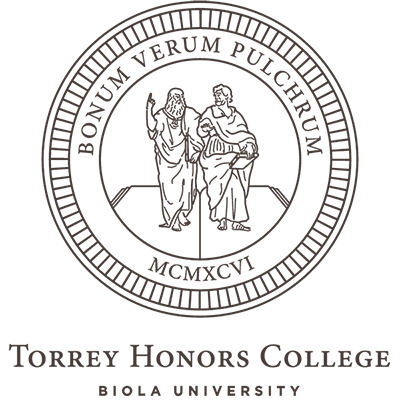A scene from The Canterbury Psalter (12th century)
Blog
Reduction Back to Eternal Generation

There’s an important move Augustine makes at several points in his Trinitarian theology, especially when he’s giving himself space to be discursive and let the big ideas unfold on their own terms. We can call it “reduction back to eternal generation.” Having a name for it is handy, because it almost always occurs in close proximity to some other important moves (it keeps close company with partitive exegesis and inseparable operations). But it’s worth singling out for focused attention. Here’s how it works.
In his sermons on John 5, Augustine spends a long time drilling down into the meaning of Jesus’ words, “the Son can do nothing of his own accord, but only what he sees the Father doing. For whatever the Father does, that the Son does likewise. For the Father loves the Son and shows him all that he himself is doing.” (John 5:19-20)
Augustine takes his time, over the course of several sermons, ruling out a kind of flat-footed reading of this text. He advances his key idea gradually, partly because each sermon needs to be understandable in its own right and mostly constructive. But in order to help his audience grasp the Son’s relation to the Father properly, he needs to draw them away from thinking of Father and Son too cozily as relating to each other the same way people do. The Father shows the Son things; the Son sees those things. But:
I shall again consider—insofar as that becomes possible for me and for you—what it means that the Word sees, what it means [for something] to be shown to the Word. If everything said here, in fact, is understood in relation to human senses or in a literal-minded way, the soul, stuffed with fancies, only comes up with some images of Father and Son as two human beings, one showing something, the other seeing it; one talking, the other listening; all of that provides idols for the heart. If idols have now been thrown out of their temples, how much more should they be thrown out of the bosoms and heads of Christians! (Homily 19, p. 334 of Hill translation; preached in the year 414)
Augustine belabors the point a bit, confronting his audience with the stark alternative: Do you really want to think so mythologically about this that you are thinking of two men in a workshop, as one is apprenticed by the other in woodworking? Isn’t there a more appropriate way to understand this showing-and-seeing activity?
Having worked up these showing-and-seeing issues, Augustine combines them with the next part of the passage: “As the Father has life in himself, so he has granted the Son also to have life in himself.” (John 5;26) Augustine’s goal is not to solve each issue as it comes, verse by verse, but to connect them all and explain their coherence. And the idea of the Father giving the Son “life in himself” is one of the broadest ways of considering what Jesus is talking about in all that he says about the Father-Son relation. Augustine’s explanation launches from this:
Why then does he say, He has given the Son to have life in himself? Let me put it as briefly as possible: He has begotten the Son. It is not, you see, that he was without life, and received life; but that by being born he is life. The Father is life, not by being born; the Son is life by being born. The Father is not from any father, the Son is from God the Father. That the Father is, he gets from no other; but that he is Father, he is because of the Son. As for the Son though, both his being Son is because of the Father, and his simply being is from the Father. So that is what he said here, “He has given the Son to have life in himself,” as though to say, “The Father who is life in himself has begotten the Son to be life in himself.” For, he wanted “has given” to be understood as “has begotten.” (Homily 19, pp. 346-7)
You can see why this move is called “reduction back to eternal generation.” Any claim about what the Son receives from the Father can be simplified, or generalized, or reduced, or traced back, to the one defining relation of Son to Father. And the best way to express that relation is using the language of begetting, or generation. At exactly the points where it seems Augustine is populating a whole list of relations between the Father and the Son (showing, seeing, doing likewise, giving inherent life, etc.), it turns out he is folding them all into one relation: the eternal generation of the Son from the Father.
Before looking at a few more instances of Augustine doing this, it’s worth saying that the “reduction back” only obtains in cases where the Father-Son relation is being considered in a way that rises above the merely economic. The Father may interact with the Son in particular ways or give him particular things in the course of the incarnate life, but Augustine’s exegetical concern is with these loaded Johannine statements about characteristic relations.
Later in the same sermon, Augustine goes a bit deeper into the idea of “life in himself:”
So then, what did he give the Son? He gave him to be the Son, he begot him to be life. That is the meaning of He has given him to have life in himself, so that he would be life, not be in need of life, so that he should not be understood to have life as a participant. If, you see, he had life as a participant, it would also be possible for him, by losing his share, to be without life. Do not ever accept such a thing about the Son, do not even think it, do not believe it. So the Father then is life abiding, the Son too is life abiding; the Father’s life in himself, not from the Son; the Son’s life in himself, but from the Father. He was begotten by the Father to be life in himself, while the Father is unbegotten life in himself. Nor did he beget the Son as younger than himself, to become equal to himself by growing up. He was not helped by time, after all, to reach his full perfection, he through whom in his full perfection the times were created. Before all times he is co-eternal with the Father. The Father, you see, was not ever without the Son; but the Father is eternal; therefore the Son too is co-eternal. (Homily 19, p. 347.)
One of the worries people have about a statement like “the Father gave the Son to have life in himself” is that it can conjure the image of a Son who lacks life but then receives it when the Father supplies it (a big improvement!). Augustine presses us to think bigger about this giving of life, and one way he does that is by tracing it back to eternal generation. It’s all one relation.
In a later sermon on the same words, Augustine is relentless about doing the same with showing and seeing: these are all alternative ways of talking about the same thing.
So then, the Father shows the Son a thing he is making in such a way that the Son sees all things in the Father, and that the Son is all things in the Father. It is by seeing, after all, that he is born, and by being born that he sees. But there was [not] a time when he was not, and then later he was born, just as there has not been a time when he did not see, and then later he saw. No, seeing for him is the same as being is for him, not changing at all is the same for him as existing without beginning and without end. So then, let us not take it in a literal-minded way that the Father sits and makes something and shows it to the Son, and that the Son sees what the Father is making and makes it himself in another place or from other material. All things, I mean to say, were made through him, and without him was made nothing. The Son is the Word of the Father; the Father said nothing which he did not say in the Son. For by saying in the Son what he was going to make through the Son, he begot this Son through whom he would make all things. (Homily 21, p. 375. From the year 420)
The block quotes could be multiplied, but you get the idea. By Homily 23 (p. 414) Augustine is still working on the topic, but has telescoped his statements down to things like “The Father shows the Son what he is doing, and by showing he begets the Son.” It’s important to have this flow of thought in mind from Augustine’s long-form sermonic interpretation of John 5, because when he takes up these issues in On the Trinity, he consistently gives only the short form, or results, of his reasoning. But once you’ve seen it in the John sermons, you can see the subtext of his argument in On the Trinity:
So the reason for these statements can only be that the life of the Son is unchanging like the Father’s and yet is from the Father; and the work of the Father and Son is indivisible, and yet the Son’s working is from the Father just as he himself is from the Father; and the way in which the Son sees the Father is simply by being the Son. For him, being from the Father, that is being born of the Father, is not something different from his working equally; and the reason he does not work of himself is that he does not (so to put it) be of himself; and the reason he does what he sees the Father doing is that he is from the Father.” (On the Trinity II:1, p. 99)
And again, on the next page:
Therefore, just as He gave the Son life (Jn 5:26) means nothing else than ‘He begot the Son who is his life,’ so also, when it says ‘He gave the Son teaching,’ it can well mean ‘He begot the Son who is his teaching.” And thus My teaching is not mine but his who sent me (Jn 7:16) may be reduced to ‘I am not from myself but from him who sent me.’ (On the Trinity II:1, p. 100)
This makes good sense exegetically of what Jesus says about the Father and the Son in John 5. It’s a powerfully doctrinal suggestion for right interpretation. It’s also important at the systematic theological level, because it provides biblical reasons for simplifying Trinitarian theology: there are not a bunch of different complex relations between Father and Son to work out. There is one extremely ample relation, about which much can be said.
About This Blog

Fred Sanders is a theologian who tried to specialize in the doctrine of the Trinity, but found that everything in Christian life and thought is connected to the triune God.


